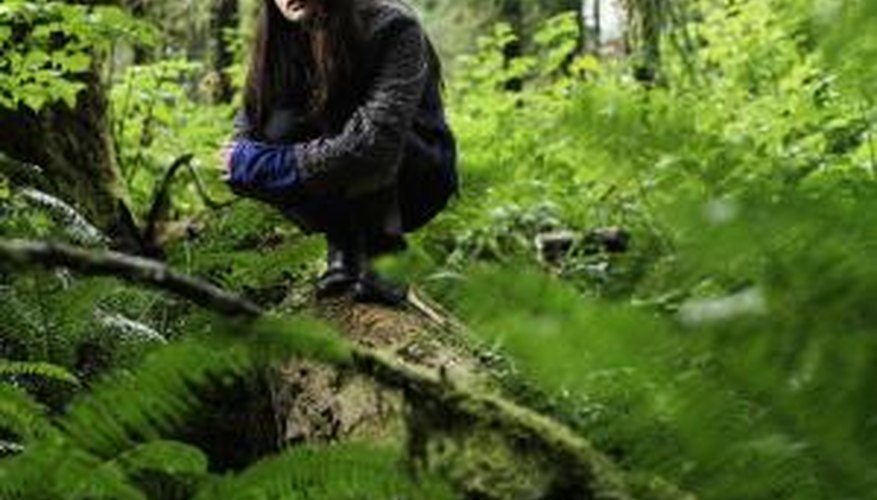Young fern sprouts of several species are bright green and tightly curled, earning the nickname "fiddlehead." In spring, they are a coveted source of fresh, crunchy, tasty greens for salads, garnishes and snacking. If you're looking for edible ferns, head for their habitat. Ferns grow in shady, moist, wooded areas, often near water. Pick, wash, boil and eat them the same day, choosing stems that are 4 to 6 inches long.
- Young fern sprouts of several species are bright green and tightly curled, earning the nickname "fiddlehead."
- Pick, wash, boil and eat them the same day, choosing stems that are 4 to 6 inches long.
Look for the ostrich fern in late spring in wooded areas of the Northeast, Midwest and northwest United States. Hunt near streams, rivers, ponds and marshes. Lift areas of leaf litter near fallen logs, because young ostrich ferns are likely to be hidden.
Examine a potential fern for 4- to 6-inch stems that are pale- to bright-green and tightly coiled at the top, covered in a light, brownish scale. This is the fiddlehead fern. Snap it off near the ground and put it in the bag. Keep looking nearby, because they grow in clusters.
Look for stands of white pine, red maple, blueberry bushes or oak for cinnamon fern. This fern grows to a height of 6 feet or more, and begins life as a skinny, pale green fiddlehead. You will have to compete with white-tailed deer to get them in early spring. You should boil this fern to soften it up for eating.
- Examine a potential fern for 4- to 6-inch stems that are pale- to bright-green and tightly coiled at the top, covered in a light, brownish scale.
- You should boil this fern to soften it up for eating.
Mark areas where you find ostrich or cinnamon ferns with stakes so you can find them again the following year.
TIP
Know as much as you can about the fern's growing environment before picking or eating one. For instance, you might not want to eat a fiddlehead grown on a landfill. The safest plants to eat are usually the ones you grow yourself, or plants that grow on land you know well.
WARNING
Avoid bracken ferns, which are edible, but sometimes dangerous. Bracken fern does not have the classic fiddlehead form when it sprouts, so it's easy to overlook. This plant can soak up heavy metals from soil and store them, making them dangerous to eat.
